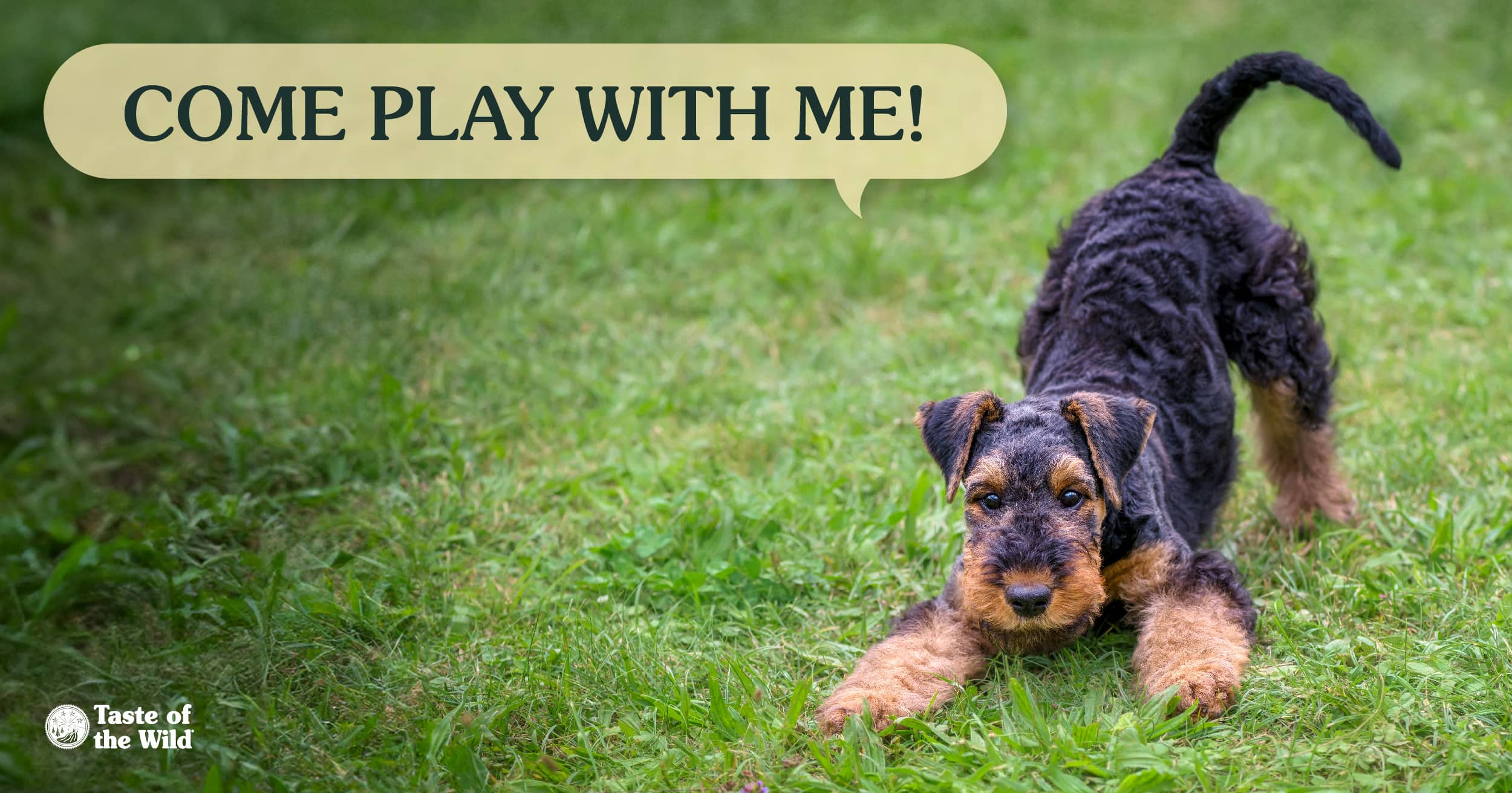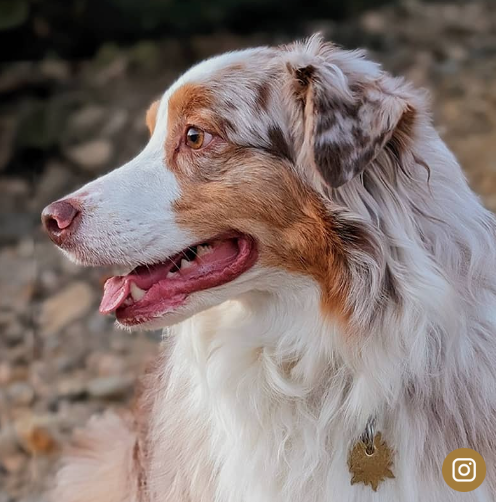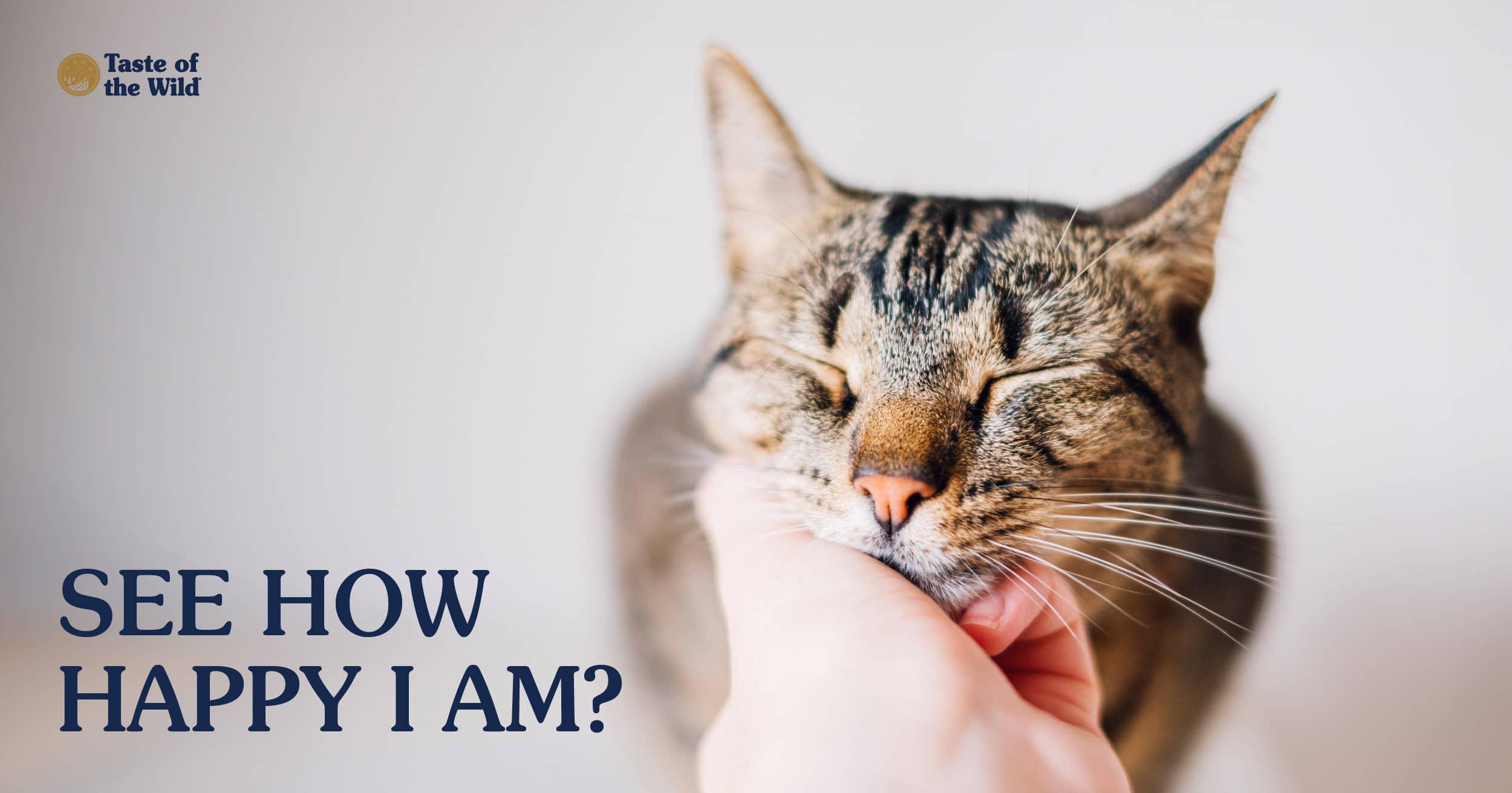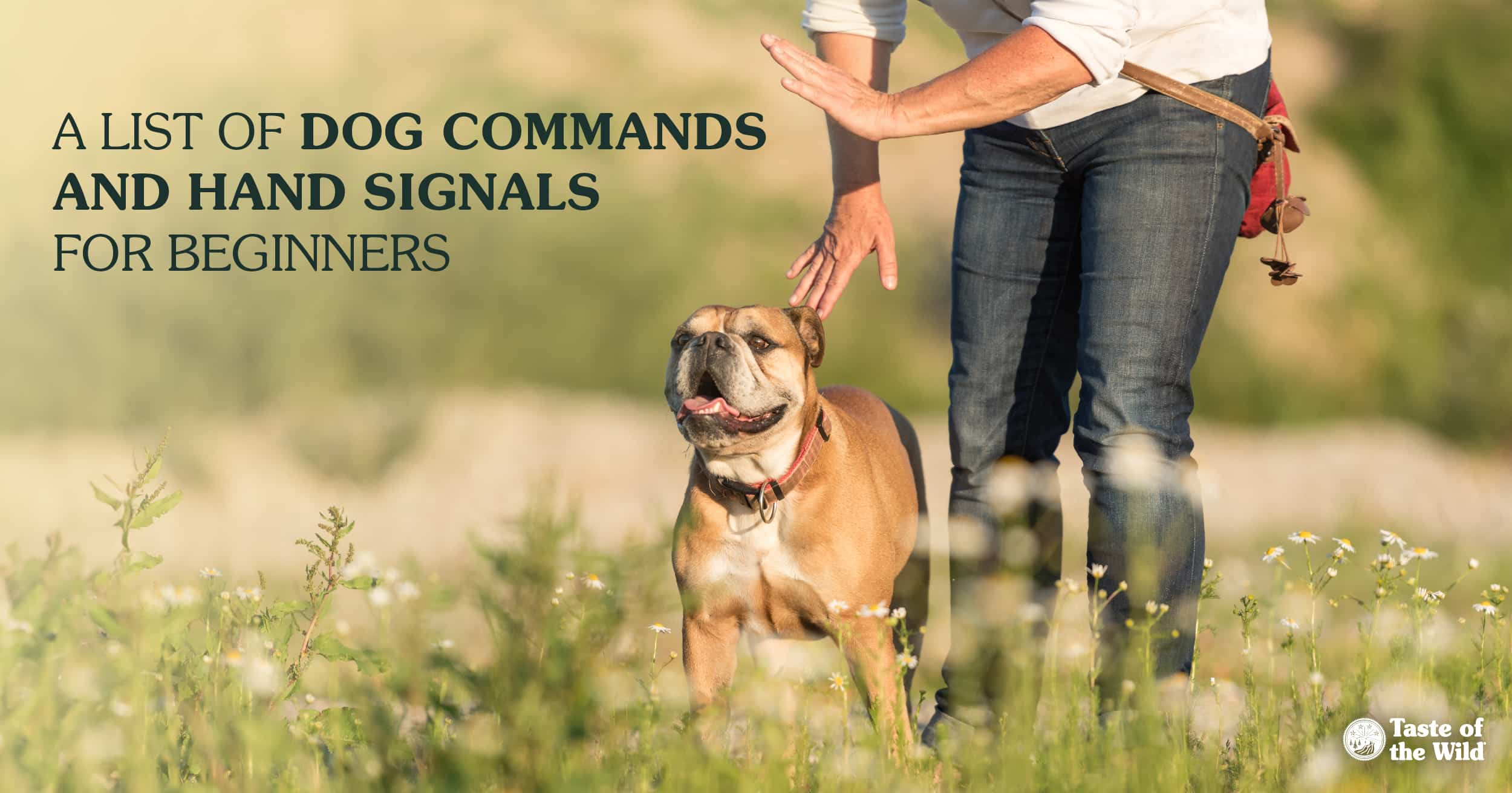Deciphering Dog Body Language
Category: Training & Behavior

Your dog may not be able to tell you whether they’re feeling sad or happy or scared, but looking at how your dog’s ears are positioned, how they’re holding their tail and other body language cues can help you decode how they’re feeling. Body language is one of the ways that dogs communicate with each other, and we can use those visual clues, too — just like how we can use hand signals as commands. Let’s go over some of the canine body language cues and what they mean.
Understanding Your Dog’s Body Language
When you start to learn how to read dog body language, it’s important to look at the whole picture. While dog ears and tails on their own can give some clues about how dogs are feeling, the dog’s communication cues need to be read in context. For example, when dogs’ ears are upright, that could mean they are feeling playful, but it can also be an early sign of aggression. Looking at the rest of their body language and the situation will help determine which one it is.
In this article, we’ll go over dog ear position meanings, tail tales and general body positions to help you understand how your dog is feeling. Remember that every dog is different — these are generalizations. You know your dog way better than anyone else, so you will be the best person to interpret how they’re feeling.
Happy or Excited Dogs
A happy dog will typically have a slightly raised and big, wide wagging tail. They’ll have relaxed ears that will be in their natural position — for some dogs this will be pointed ears and for others it will be floppy ears. If your dog’s excited, their tail may be slightly raised and have a fast wag. A dog that’s ready for play will have high and perky ears with relaxed body language. You may notice that the tail of a playful dog will be wagging mostly to the right. Their eyes will be big and wide and their mouth will be open but not baring teeth (you might say they were smiling).
Nervous or Anxious Dogs
A nervous dog will have their tail hanging down and doing relaxed little wags. If they’re anxious, you may notice the tail is mostly wagging to the left. They may have their ears back and possibly flattened against their head. Their pupils may be dilated and they might be giving you “whale eye.” We’ll describe whale eyes a little later.
Curious or Alert Dogs
A curious dog may have a loose tail that is straight out (horizontal). If curiosity has moved on to alert, their tail may go straight up (vertical). Their ears will be upright, perky and facing forward. They may even move their ears like a radar to fine-tune where the curious sound is coming from. They’ll have an open mouth but not show teeth and may be looking intently but not at anything in particular — they’re busy listening to whatever they’re curious about or alert to.
Fearful or Scared Dogs
A fearful dog will typically crouch near the ground and have their tail still and tucked between their legs. Alternatively, they may display submissive behaviors such as rolling onto their back and exposing their belly. Fearful dogs will often yawn and repeatedly lick their lips. They may pant and have dilated pupils.
Aggressive or Defensive Dogs
Dogs who are showing aggressive behaviors will usually stand tall at full height, possibly leaning forward and holding their tail straight up. Their tail may be arched over their back and doing quick wags. They may raise their hackles — their hair bristles down their spine. The whites of their eyes may be more obvious, they may bare their teeth, growl, or snarl and snap at the air. Aggressive dogs pull their ears down and have them pinned flat against their head.
It’s important to note that any dog, even the most mild-mannered dog, will bite if they’re pushed to the edge. Dog bites can occur in many different scenarios — not just when the dog is showing aggressive body language. They can also bite if they’re fearful, feel threatened, are startled, are in pain or if their space is invaded, especially when eating. That’s why it’s recommended to never leave young children alone with a dog.
Dog Behavior 101
Here are some frequently asked questions related to dog body language and behavior. If you have other questions about your dog’s behavior and what it means, ask your veterinarian or a certified dog trainer. They can help you identify whether it’s a normal behavior or something to be concerned about.
What Is “Dog Whale Eye?”
Whale eye or “half-moon eye” is usually seen in dogs who are feeling stressed or anxious. The dog will turn their head away but keep looking at whomever or whatever is causing the stress or perceived threat. This makes the white of their eyes appear as a half-moon shape. You may also notice other signs of anxiety and stress like their tail between their legs and their ears flat against their head.
Why Do Dogs Sit Facing Away from You?
This position is usually a sign of trust. They feel comfortable enough with you to not have to keep a watchful eye on you. If your dog backs into you when greeting you, that’s also a friendly, submissive sign (i.e., they probably want you to sniff their nether regions). Or maybe you just give really good back scratches when they sit like this?
Can Your Dog’s Ears and Tail Really Tell You How They’re Feeling?
Yes, the position of your dog’s ears and tail can give you an indication of how they’re feeling. As we mentioned, you should use situational context along with ear and tail positions and body posture to understand how your dog is feeling. And remember you are the best person to know how your dog is feeling.
The information in this blog has been developed with our veterinarian and is designed to help educate pet parents. If you have questions or concerns about your pet’s health or nutrition, please talk with your veterinarian.




